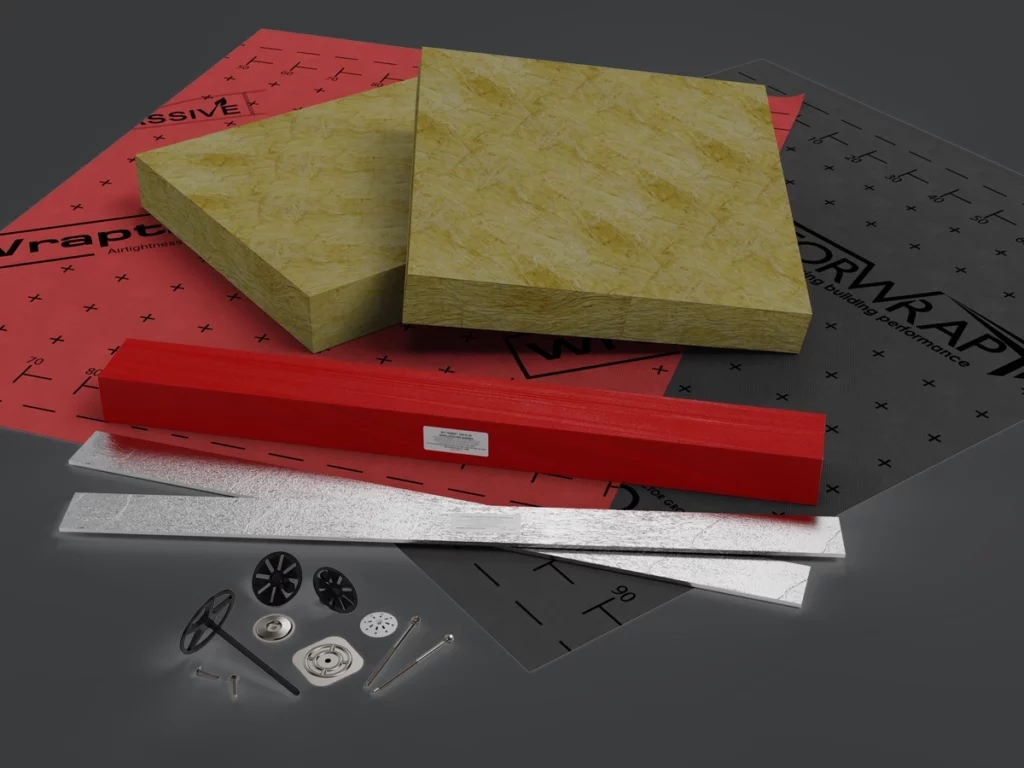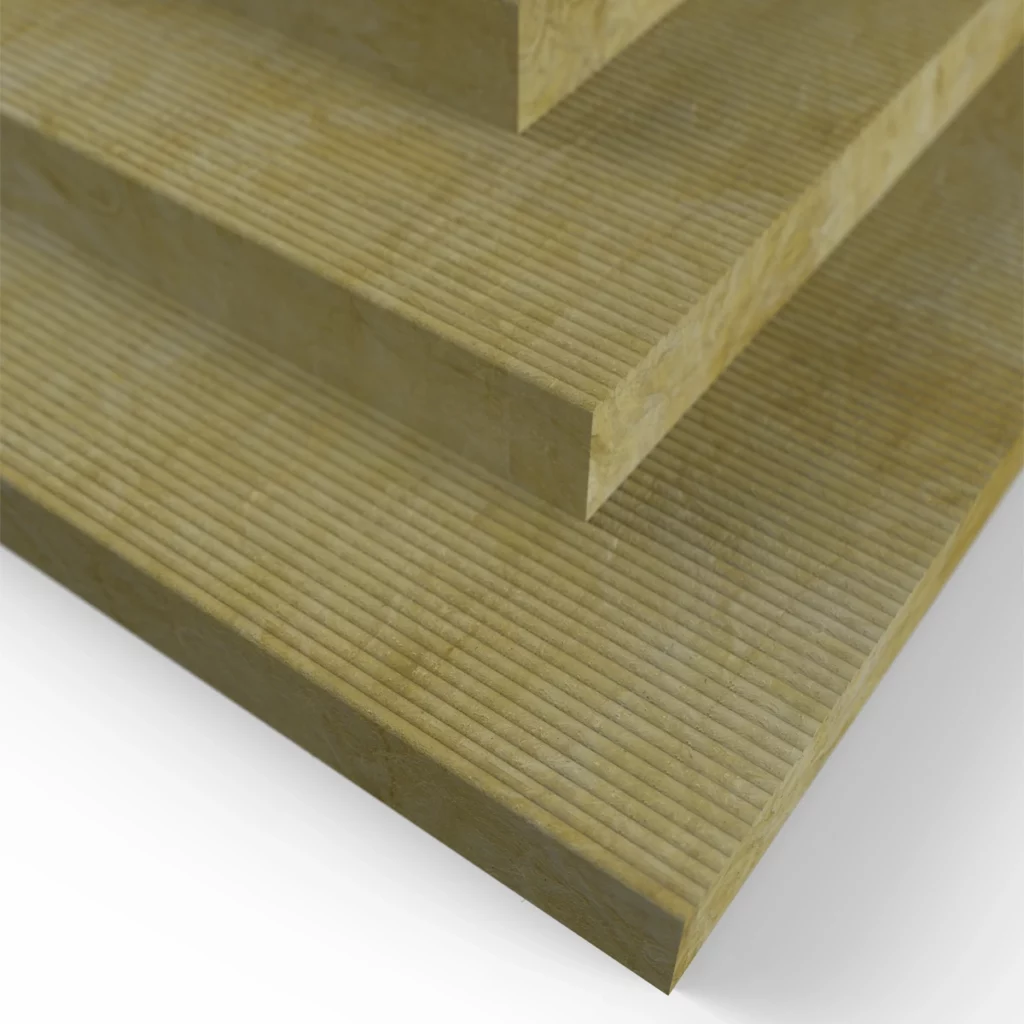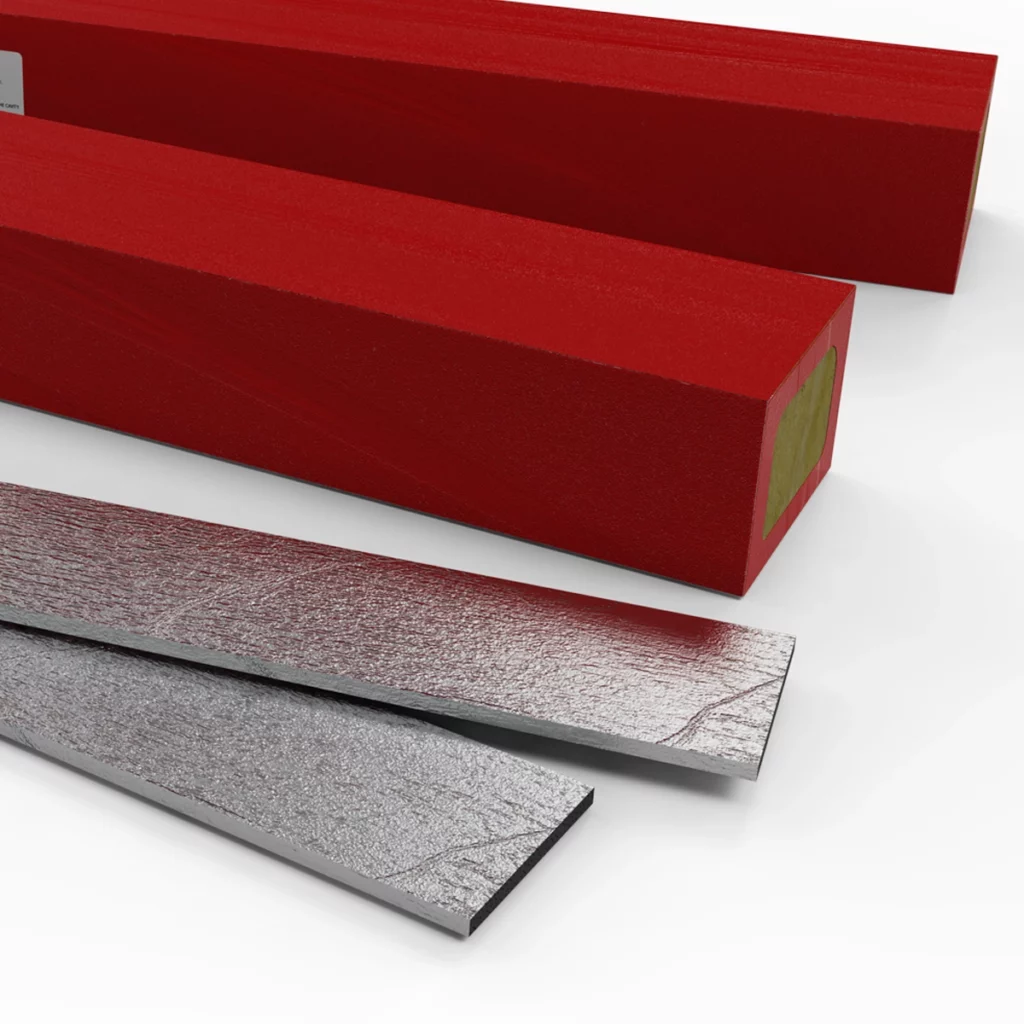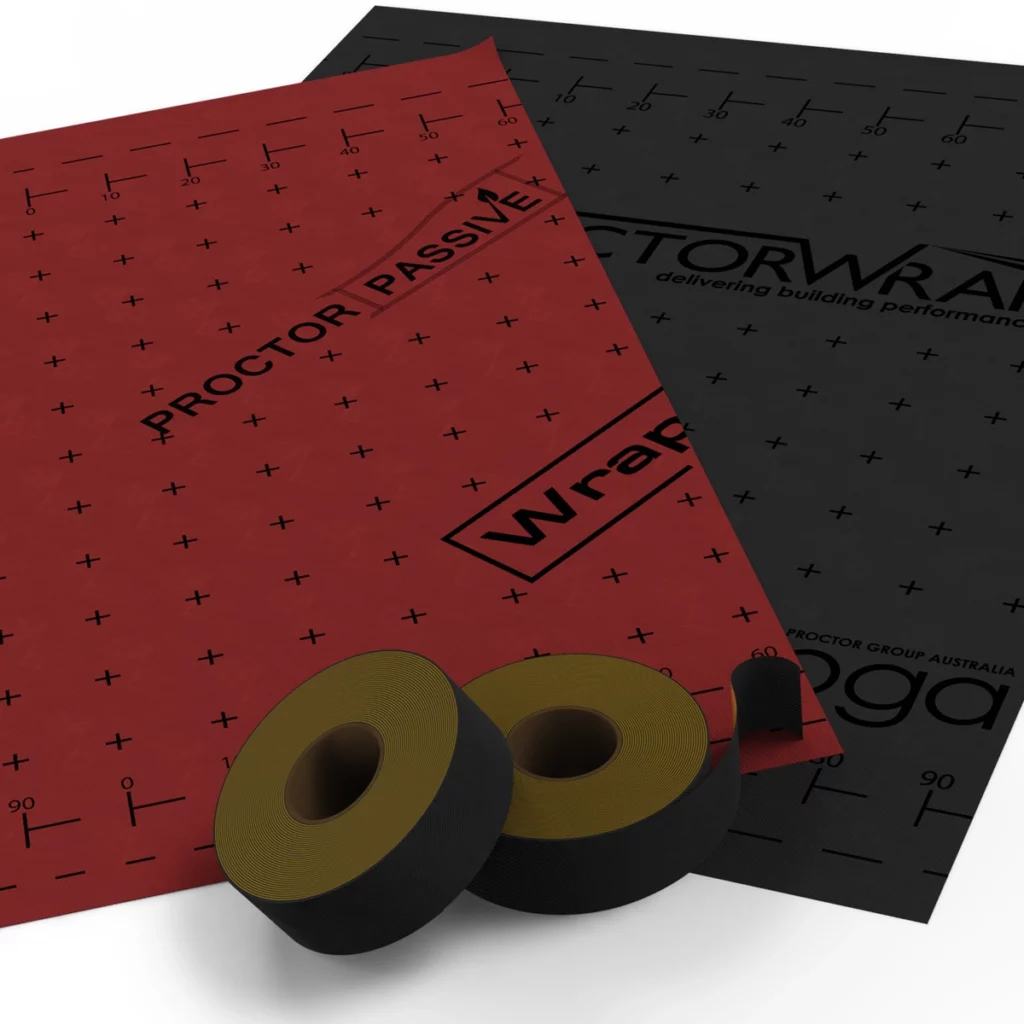
Control layers
Control layers in a building facade are essential components that play a pivotal role in maintaining comfort, energy efficiency, and the overall performance of the structure. These layers are strategically designed to regulate various environmental factors, such as temperature, moisture, air quality, and safety, ensuring that the interior spaces remain comfortable and sustainable. Typically, control layers include insulation to manage thermal transfer, vapor control layers (sarking) to prevent water intrusion and air leakage, whilst regulating vapour diffusion. They work in synergy to create a well-balanced and efficient building envelope.

Thermal Insulation
External grade non-combustible thermal insulation, used to reduce the transfer of heat between the interior and exterior of a building…

Thermal Breaks
Thermal breaks are structural components strategically integrated into a building’s design to minimize heat loss and…

Fire Barriers
Façade cavity fire barriers are critical safety features integrated within building exteriors, designed to restrict the spread of flame, smoke, and…

Membranes & Tapes
A selection of building membranes and vapor-permeable control layers to allow the controlled passage of moisture vapor through a…
